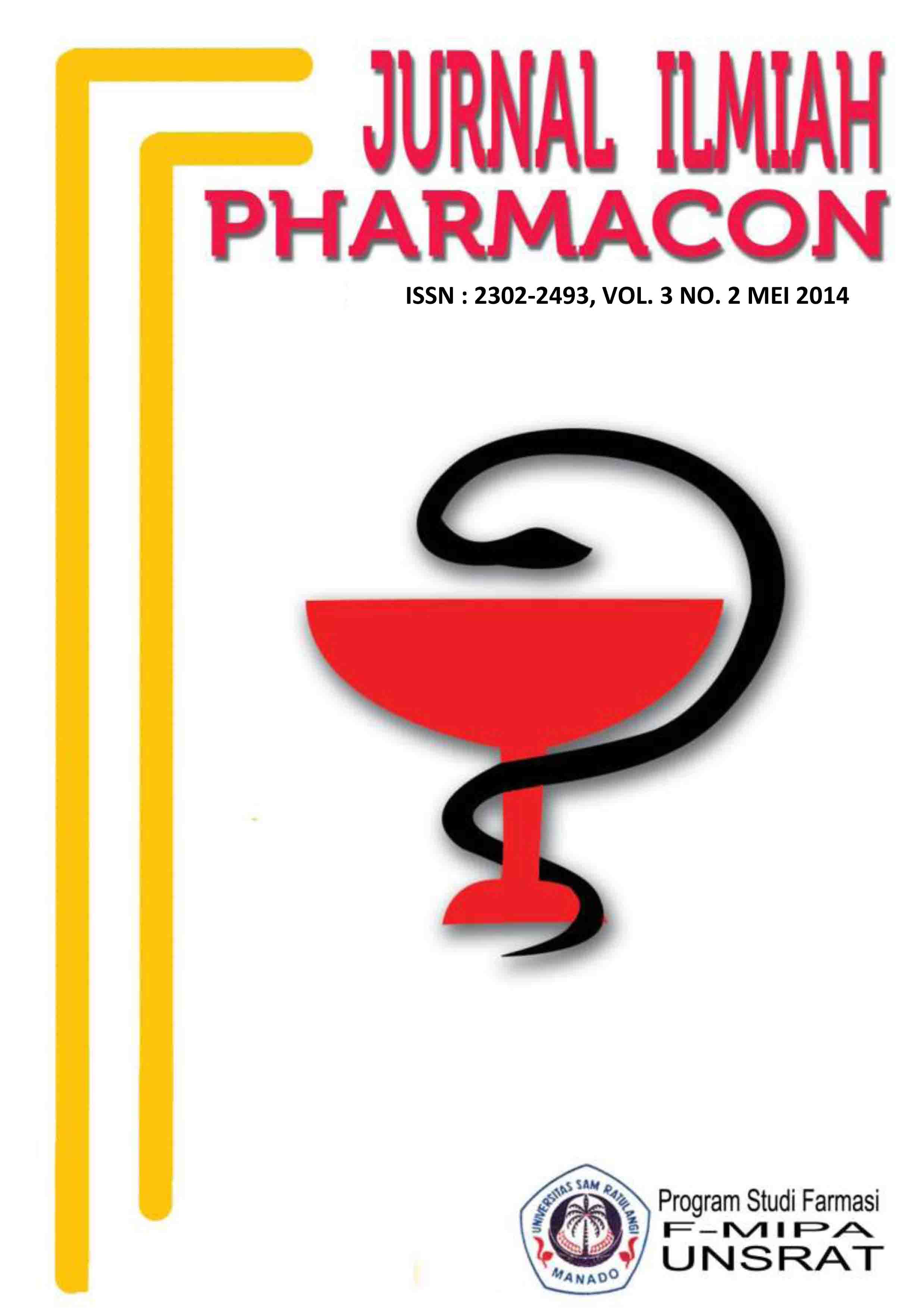UJI AKTIVITAS ANTIOKSIDAN DARI FRAKSI BUAH SIRIH HUTAN (Piper cubeba) DENGAN METODE DPPH
DOI:
https://doi.org/10.35799/pha.3.2014.4784Abstract
This study was intended to determine the antioxidative effects from the fraction of betel (Piper cubeba) fruits. Betel fruits was dried with wind dried method for 3 days, and extracted with maseration method with Ethanol 80%. Furthermore betel fruits extract liquid successively fractioned using petroleum eter, etyl acetate, butanol, ethanol and aquades. The antioxidative effect of the fraction were determined by 1,1-diphenyl-2-pycrylhydrazyl (DPPH). Total phenolic content were determined using Folin-Ciocalteu method. The result of this study indicate that the butanol fraction has the highest content of total phenolic followed by etyl acetate, petroleum eter, aquades and ethanol. Total phenolic content of a row is 38.67; 30.30; 28.87; 25.00 and 19.89 mg/kg. Butanol fraction also has the highest antioxidative effect than the other fraction. This research concludes fraction of butanol can act as antioxidant as well, and betel fruits can be a natural antioxidant resources.
Â
Key words : betel fruit, antioxidant, fraction, total phenolic content, DPPH
Â
Â
Downloads
How to Cite
Issue
Section
License
Authors who publish with this journal agree to the following terms:
- Authors retain copyright and grant the journal right of first publication with the work simultaneously licensed under a Creative Commons Attribution-NonCommercial 4.0 International License that allows others to share the work with an acknowledgement of the work's authorship and initial publication in this journal.
- Authors are permitted and encouraged to post their work online (e.g., in institutional repositories or on their website) prior to and during the submission process, as it can lead to productive exchanges, as well as earlier and greater citation of published work (See The Effect of Open Access)










